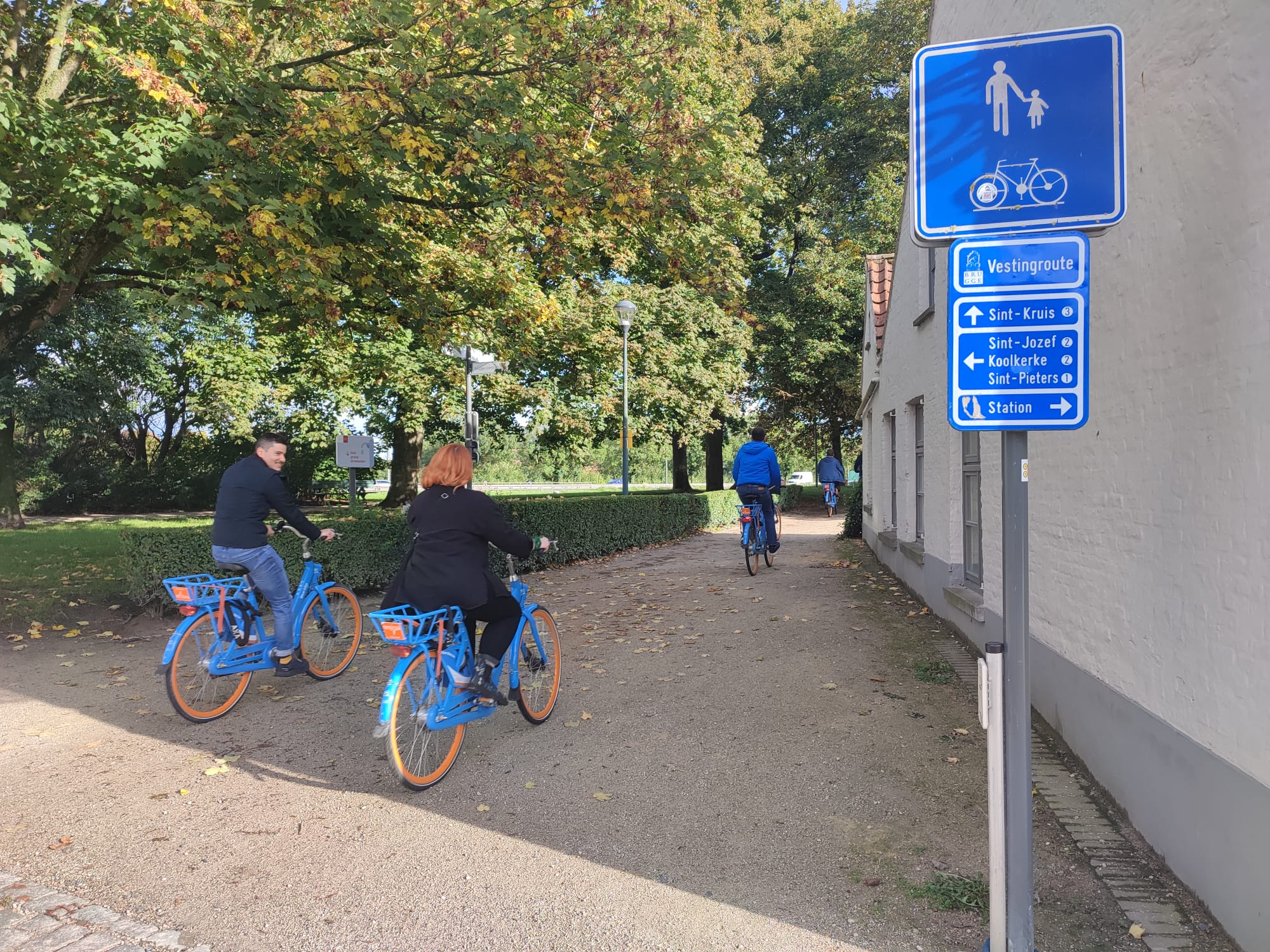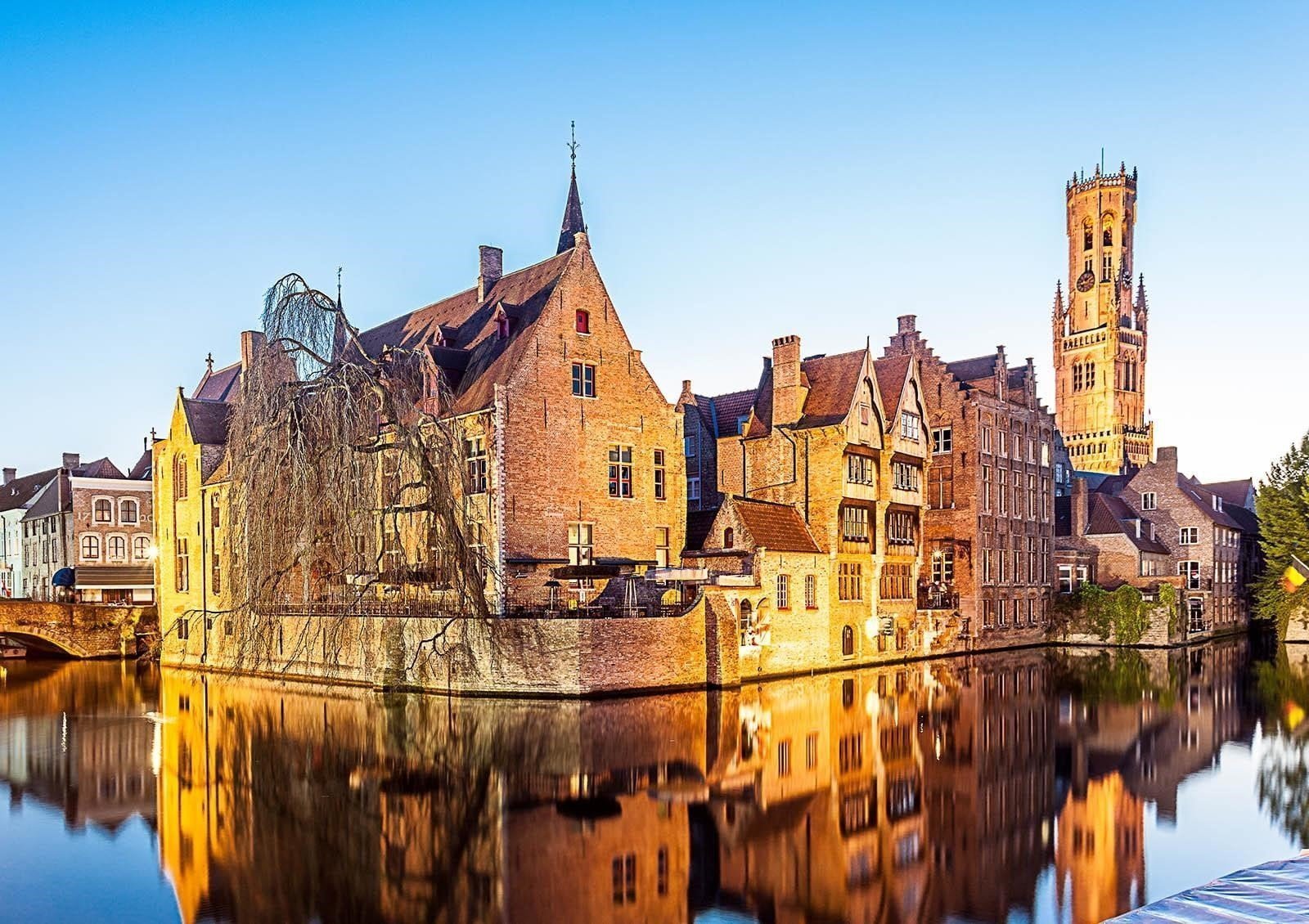Bruges in the spotlight: A transport transition tour
“Bruges was designed and modulated over the centuries, not for cars but for pedestrians; as a result, Bruges has remained true to the human scale to this day,” Structure Plan, 1972.
On 29 & 30 September, POLIS’ annual strategy meeting took place in Bruges. The Belgian POLIS member city is an intriguing example of the development and acceleration of sustainable urban mobility seeking to create a “city friendly mobility”, meeting climate, social inclusion and economic development goals… all at once!
As POLIS revisits and develops its own strategy, exploring how we can improve and expand our services, we took this opportunity to spotlight some of Bruges’ mobility strategy. With a tour of the city’s cycling paths and parking from city representatives, it was a unique opportunity to see what the city is planning.
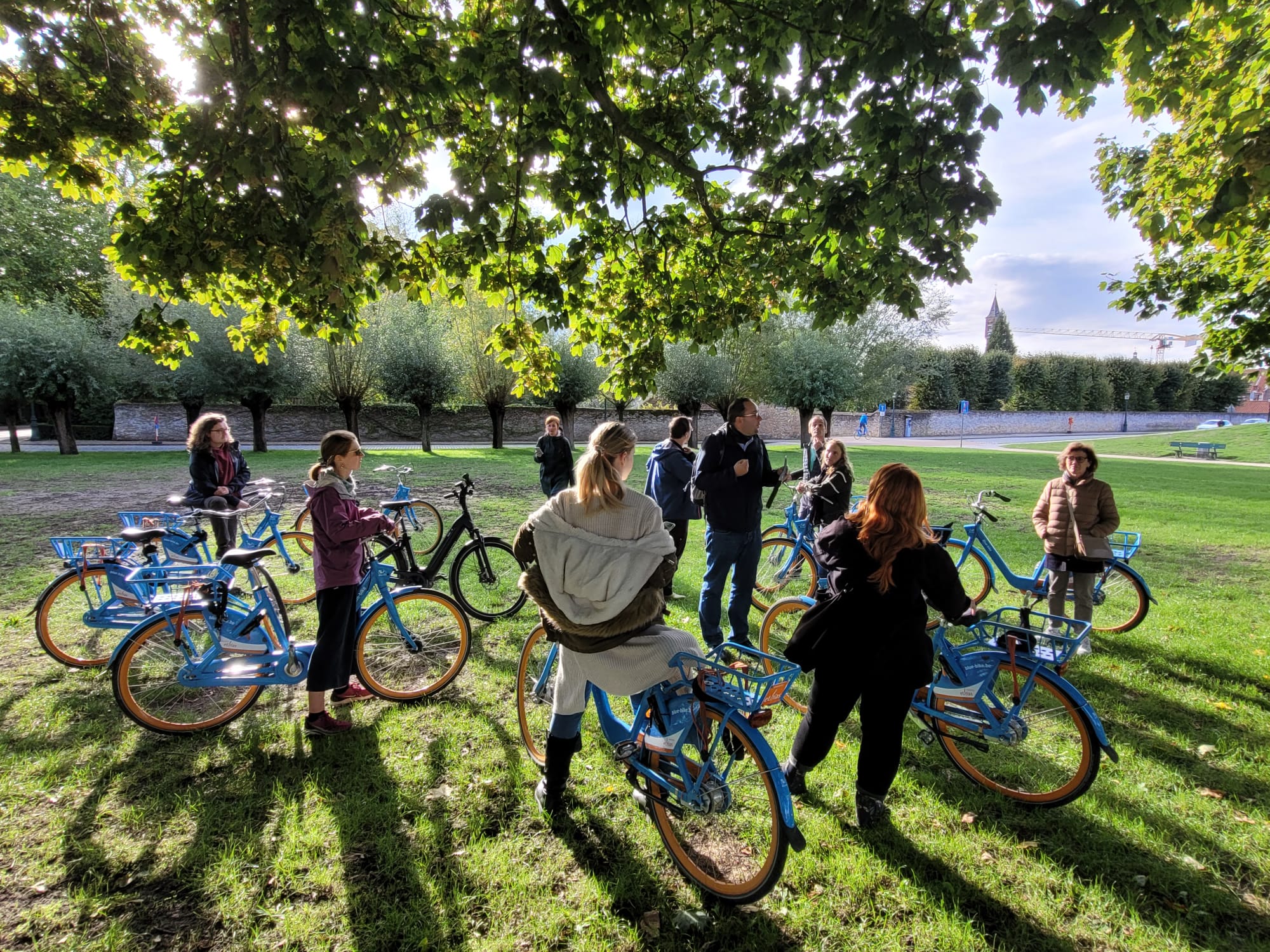
POLIS colleagues take a cycle tour of the city's new cycling plans
New traffic circulation
Over the last 50 years, Bruges has developed a series of mobility plans which have revised traffic flows, public transit services and active travel. Since the 1970s, extensive efforts have been dedicated to transitioning away from a car-centric city.
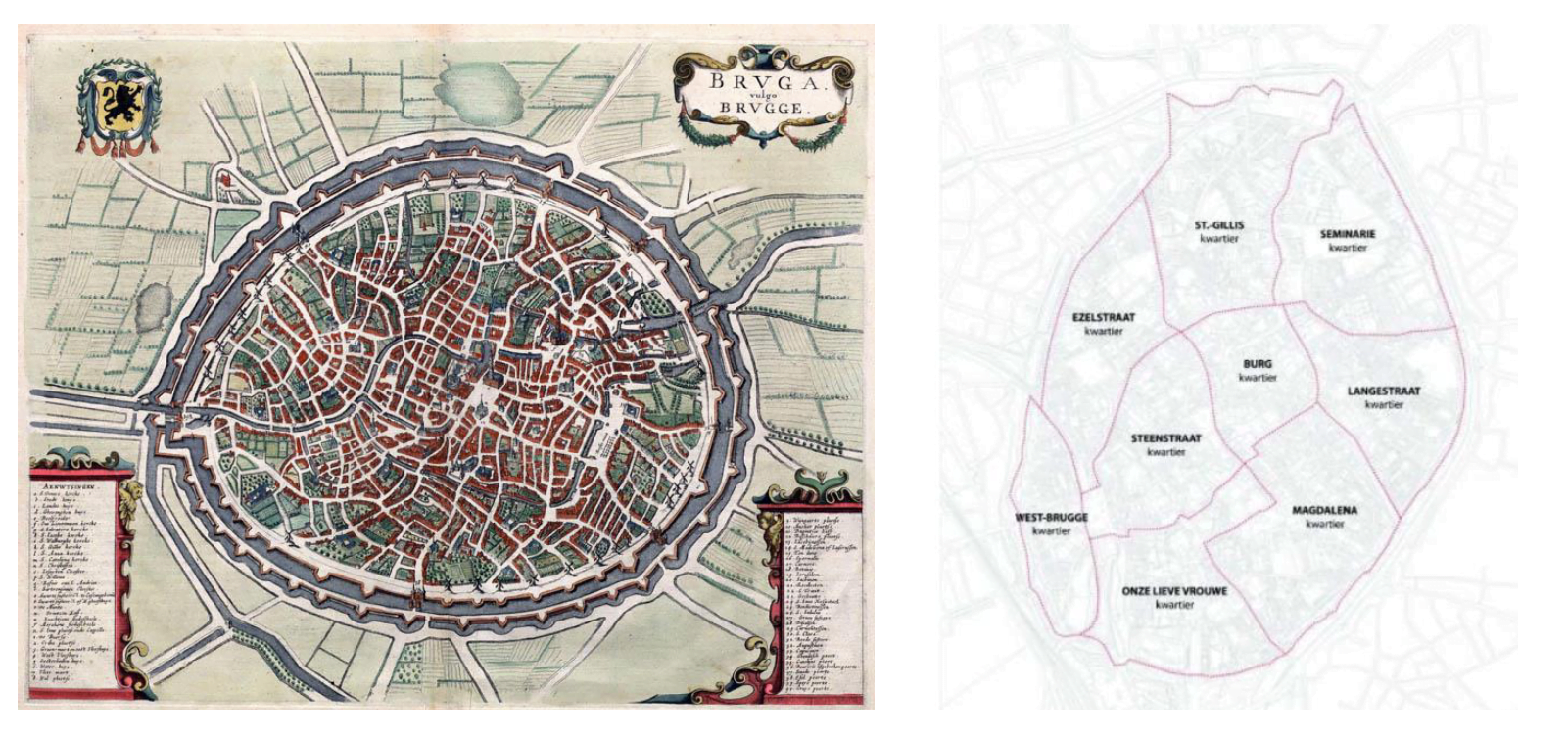
Comparison of historic and current urban planning. Credit: Stad Brugge
Bruges has been a front-runner in traffic circulation planning. Along with their sister POLIS member, Groningen, they were one of the first to develop new traffic plans which catered for rapidly developing mobility mixes and redirected car traffic out of the city centre. The 1972 Structure Plan introduced a new vision regarding the historical city centre- a plan which has been continually revised and updated.
The city centre has been at the helm. While tourism and a growing population have placed pressure on passenger and freight transport, the city centre (a UNESCO heritage site) has attempted to keep cars at bay.
For example, heavy vehicles have been banned from the centre and companies are working with alternatives such as BPost, park and ride services have been established and expanded, and public transit improved to provide adequate alternatives, with new train lines and enhanced rail connections- with direct connections to Brussels airport.
However, catering for tourism has required, carefully balancing local and visitor transit needs; no mean feat- as many POLIS members know all too well.
Bruges is visited by an eye-watering 8.3 million people a year, a figure which rose by 28% between 2017 and 2019.
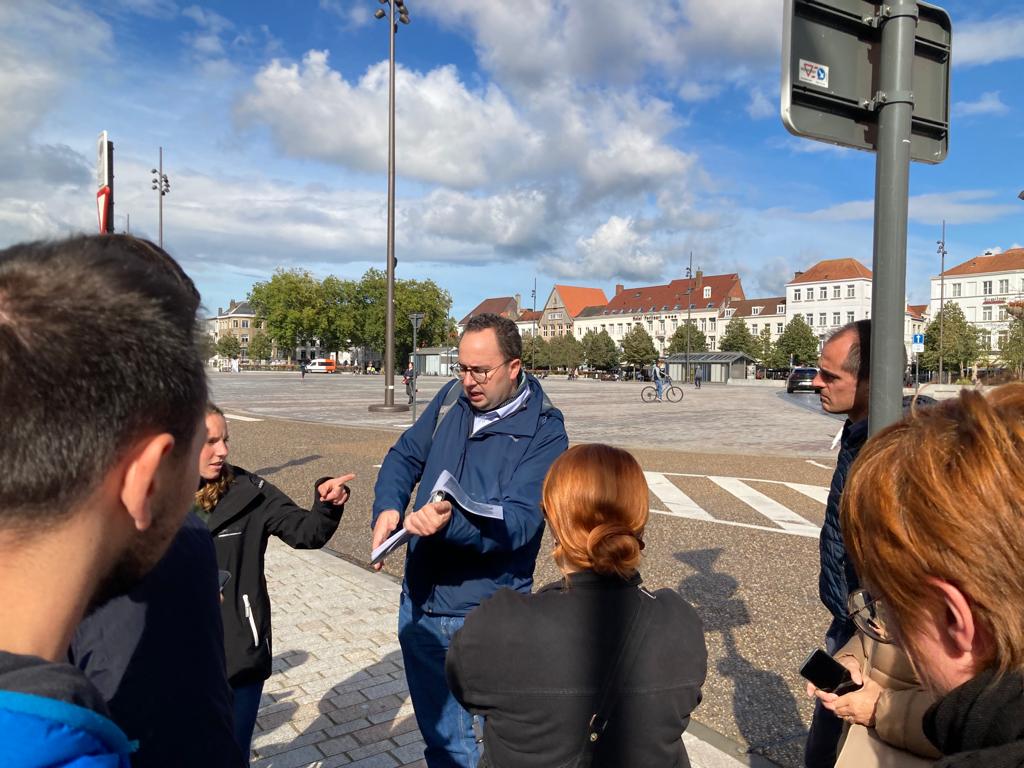
POLIS on a mobility tour of the city.
“We must put citizens first; we cannot make the same mistake many others have done. We must place liveability first when it comes to managing tourism,” asserted Bart Slabbinck, Mobility Expert in the city, providing POLIS colleagues with a tour of the new transport plans.
A city for cycling
Pedal power has long been at the heart of Bruges transport and since proclaiming itself ‘Brugge Fietsstad’ in 1997, the city has accelerated cycling infrastructure and promoted it amongst citizens and visitors.
With a 42% modal split, bicycles are the second most-used means of transport for commuting to work or school.
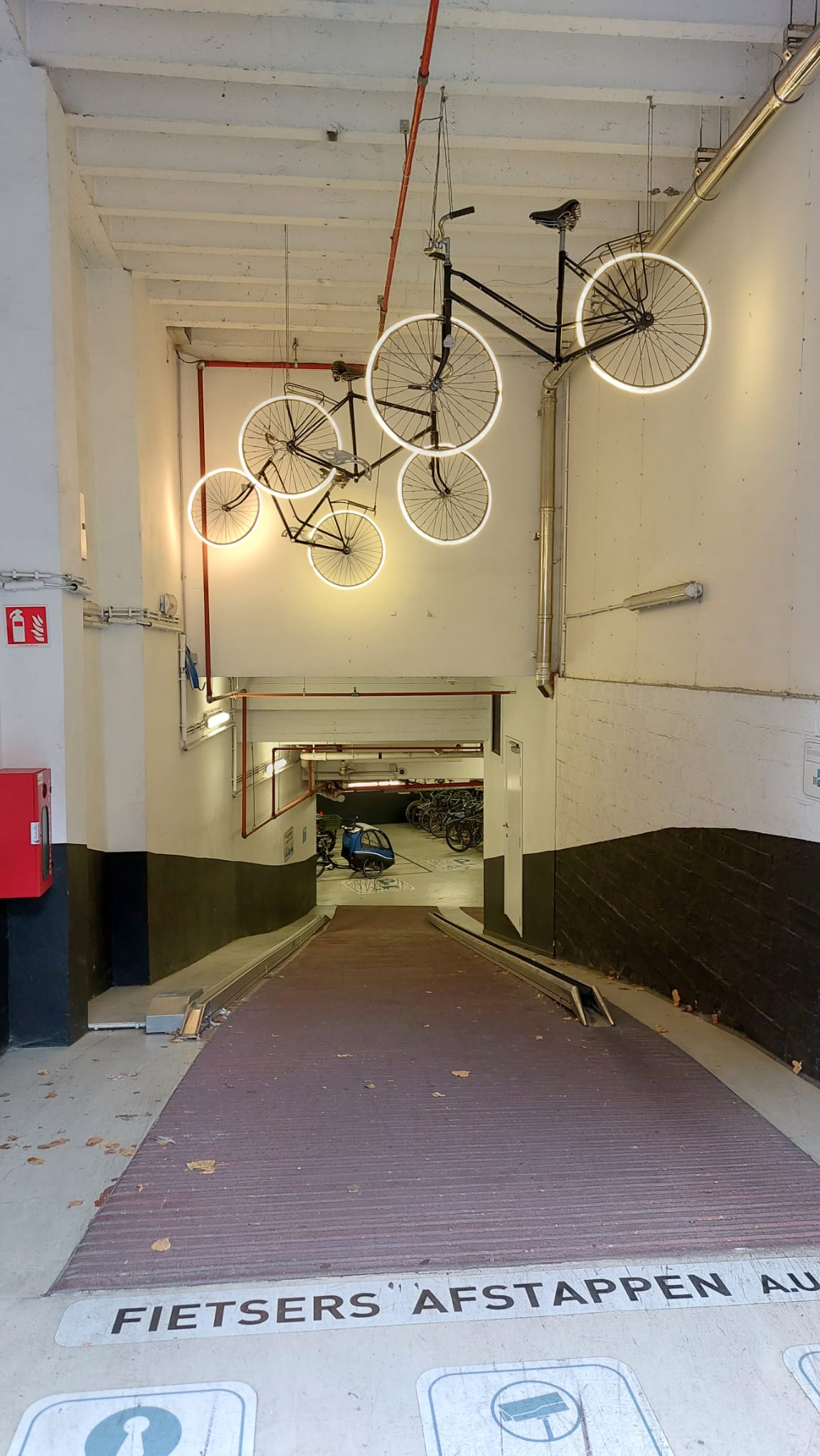
Cycle parking in Bruges
The city has developed a network of public bike parking stations, designed to encourage multi-modal transit and deter car travel into the city centre, with safe and sustainable bicycle lockers at the peripheral car parks and P&R sites.
Critically, residents are given priority in many of these services. For example, the Bicycle Parking Zand holds a zone where around 800 bicycles can be stored separately for residents.
Development around the FR30 ring road which encircles the city is one of their flagship projects. Here, at present, pedestrians and cyclists must compete for space along narrow paths, which causes congestion, particularly during peak travel periods.
This strategy was kicked off in August 2019 with a series of stakeholder meetings as well as input from European experts and cycling advocacy groups.
“However, it is also important we think beyond this ‘ring’. Conception in such a way is a car-centric vision, and we want Bruges’ cycling infrastructure to be developed not just alongside vehicular routes, but autonomously too,” said Slabbinck.
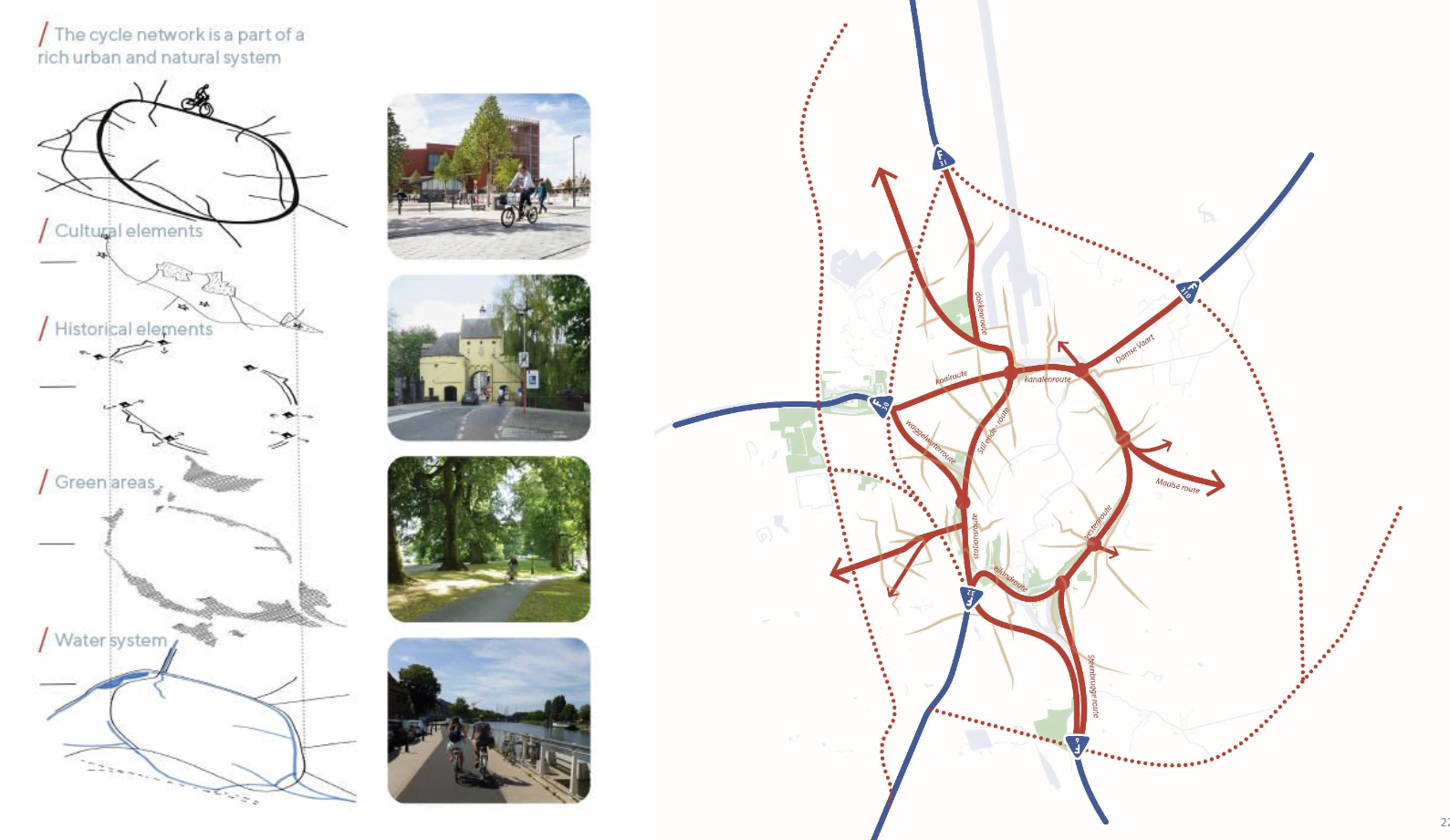
Active travel is being improved around the ring road and along radial routes. Credit: Stad Brugge
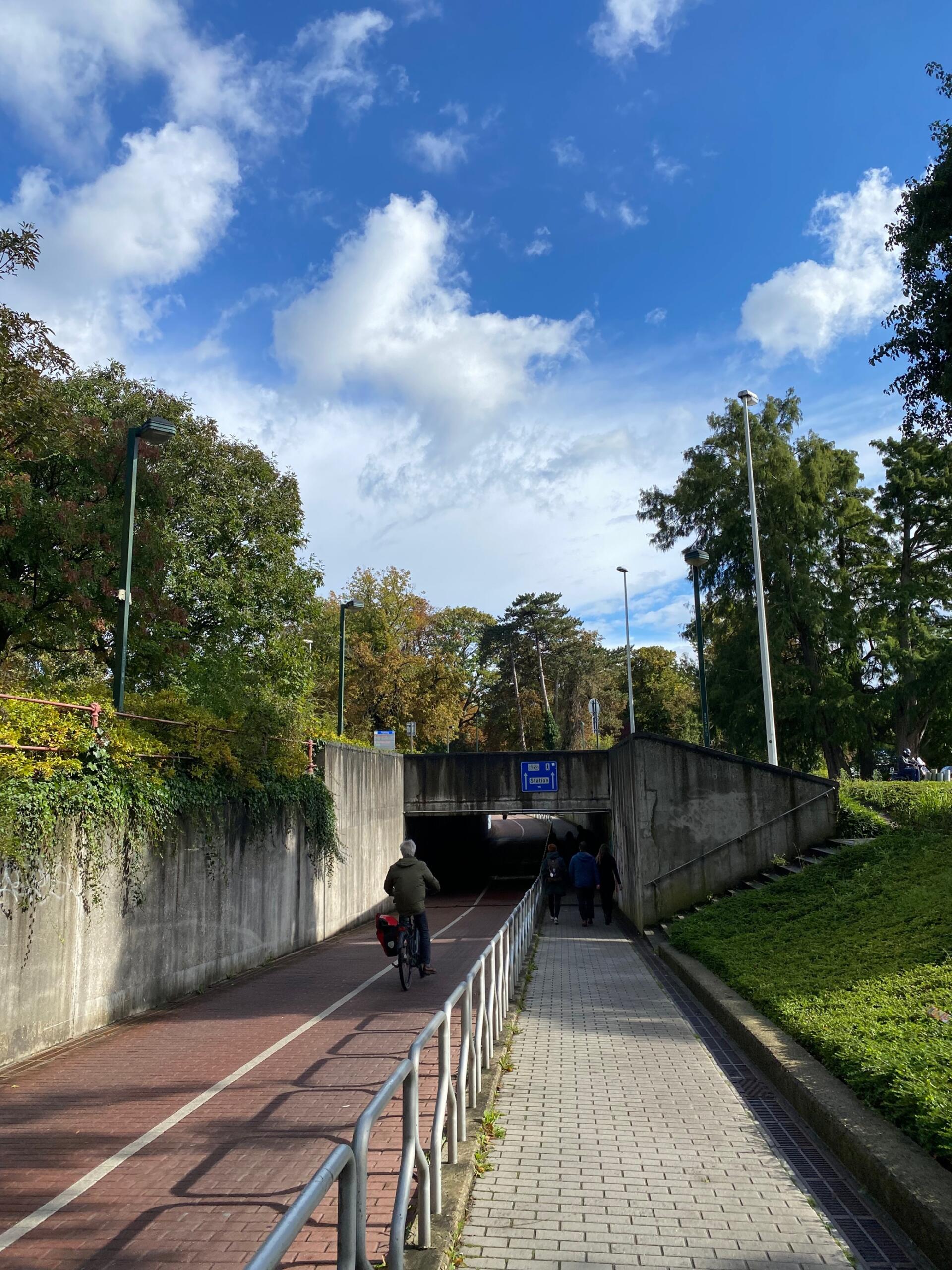
Cycling and walking paths under the ring road. The city is planning another one next to the station
Given the historic nature of the city, this has proved quite a challenge.
“We must think on a network level, in a historic city you cannot enlarge paths, you have to look at different ways of providing space for all,” noted Slabbinck.
For Bruges, this has meant creating new spaces for active travel, such as the pedestrian tunnel planned at the main train station, and separated cycle lanes which have- and will continue to create safer and more accessible active travel.
Neighbourhood mobility planning: Start them young!
Active travel has been encouraged and enhanced through Neighbourhood mobility plans. Building on the superblock concept - pioneered by POLIS member city Barcelona - Bruges is establishing cycling zones, with single-directional roads.
School streets are part and parcel of this planning.
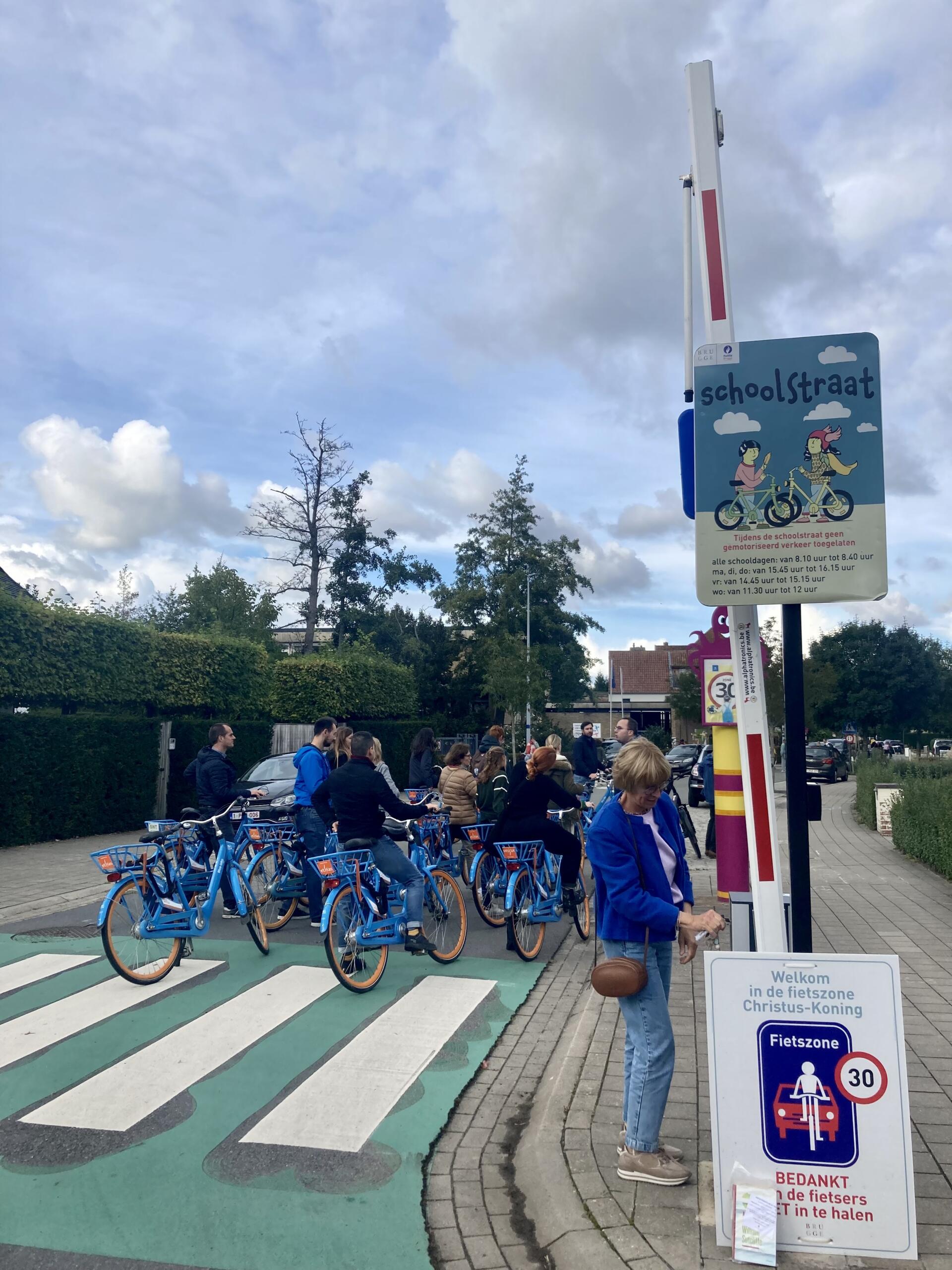
A new school street in Bruges
“We are taking a bottom-up approach here; we work with schools to help develop and pilot these school streets, and also work with them on cycle training for our young people” said Slabbinck, as we cycled through the local neighbourhoods, filling with children as the school day came to a close.
This has been supported by a series of campaigns encouraging citizens to choose an alternative to the car. One of the most innovative of these, ‘30 days without a car’, saw more than 6000 participants throughout Flanders opt for alternative modes across June; achieved through close collaboration between the city, SNCB, Blue-Bike, De Lijn and Cambio.
“We learn a lot from other cities, but we have a lot to teach our peers here too”, said Slabbinck.
“As we move forward, we hope to create a city for all, addressing key areas of conflict in a targeted way which incorporates everybody’s mobility needs.”
You can read the new cycling plans HERE.
